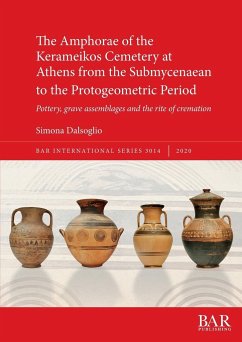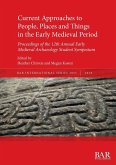The amphorae dating from the Submycenaean to the end of the Protogeometric period, brought to light in the Kerameikos cemetery, represent a high quality sample of Athenian output of the shape; this is due to their belonging to intact, archaeologically significant contexts. These vessels, usually employed as cinerary urns in the 'trench-and-hole' tombs, can be found also as grave goods or among the debris of the pyre offerings. The amphorae in this volume are re-examined with the help of new drawings and by adopting the 'envelope' method for their comparison. It has thus proven possible to recognise several typological groups, and to collect information about the process of standardisation of the vases and the organisation of the production process. Moreover, analytical reviews of the burials containing the amphorae and of the physical placing of the grave and pyre goods within the tomb shed new light on the cremation rite performed and on the connections between Athens and other sites employing a similar ritual. Undertaken with the assistance of the Institute for Aegean Prehistory.








